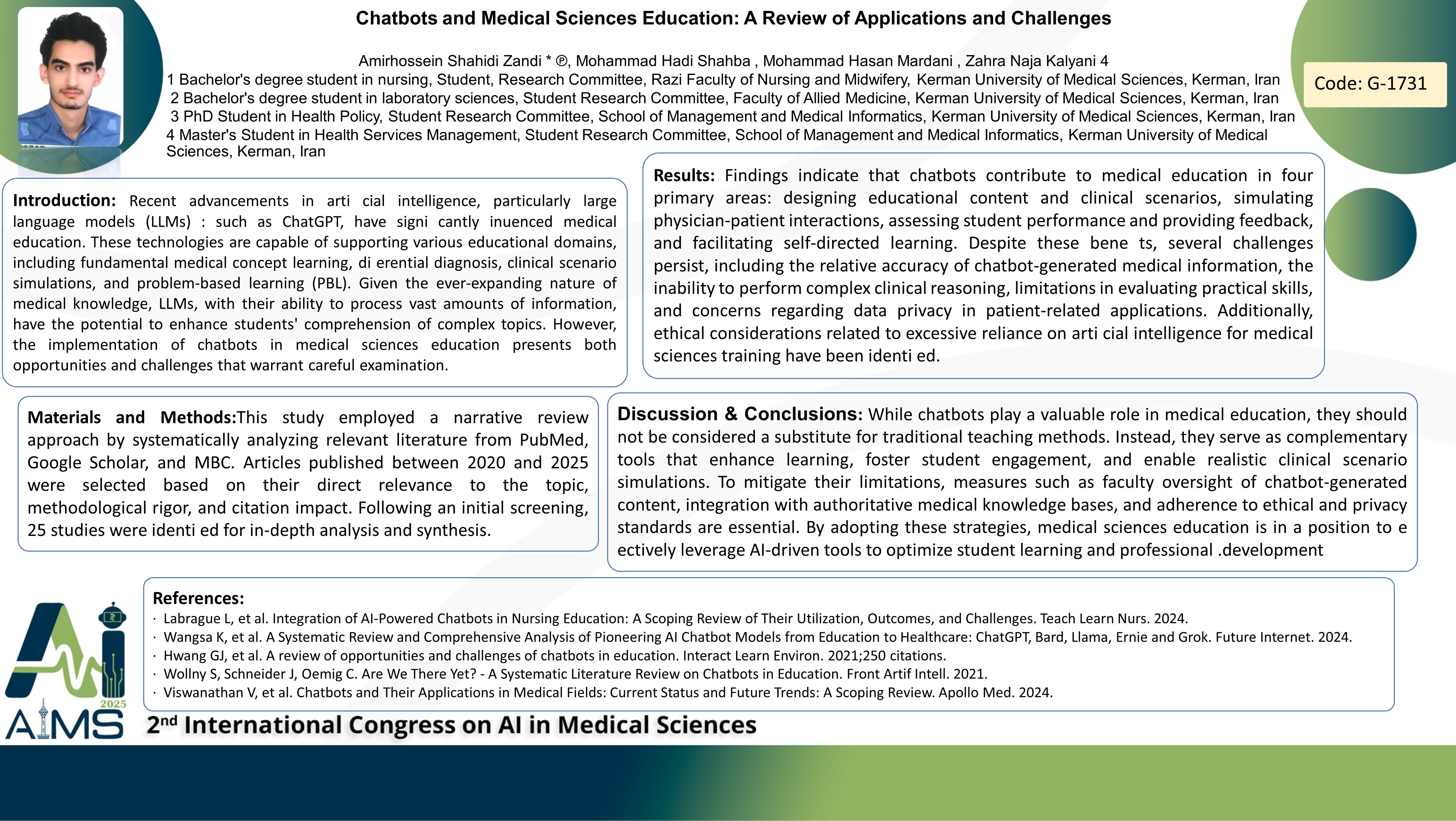Chatbots and Medical Sciences Education: A Review of Applications and Challenges
کد: G-1731
نویسندگان: Amirhossein Shahidi Zandi * ℗, Mohammad Hadi Shahba, Mohammad Hasan Mardani, Zahra Najafi Kalyani
زمان بندی: زمان بندی نشده!
برچسب: دستیار مجازی هوشمند
دانلود: دانلود پوستر
خلاصه مقاله:
خلاصه مقاله
Background and Aims: Recent advancements in artificial intelligence, particularly large language models (LLMs) such as ChatGPT, have significantly influenced medical education. These technologies are capable of supporting various educational domains, including fundamental medical concept learning, differential diagnosis, clinical scenario simulations, and problem-based learning (PBL). Given the ever-expanding nature of medical knowledge, LLMs, with their ability to process vast amounts of information, have the potential to enhance students' comprehension of complex topics. However, the implementation of chatbots in medical sciences education presents both opportunities and challenges that warrant careful examination. Methods: This study employed a narrative review approach by systematically analyzing relevant literature from PubMed, Google Scholar, and MBC. Articles published between 2020 and 2025 were selected based on their direct relevance to the topic, methodological rigor, and citation impact. Following an initial screening, 25 studies were identified for in-depth analysis and synthesis. Results: Findings indicate that chatbots contribute to medical education in four primary areas: designing educational content and clinical scenarios, simulating physician-patient interactions, assessing student performance and providing feedback, and facilitating self-directed learning. Despite these benefits, several challenges persist, including the relative accuracy of chatbot-generated medical information, the inability to perform complex clinical reasoning, limitations in evaluating practical skills, and concerns regarding data privacy in patient-related applications. Additionally, ethical considerations related to excessive reliance on artificial intelligence for medical sciences training have been identified. Conclusion: While chatbots play a valuable role in medical education, they should not be considered a substitute for traditional teaching methods. Instead, they serve as complementary tools that enhance learning, foster student engagement, and enable realistic clinical scenario simulations. To mitigate their limitations, measures such as faculty oversight of chatbot-generated content, integration with authoritative medical knowledge bases, and adherence to ethical and privacy standards are essential. By adopting these strategies, medical sciences education is in a position to effectively leverage AI-driven tools to optimize student learning and professional development.
کلمات کلیدی
AI, Chatbot, Digital Medical Sciences Education
